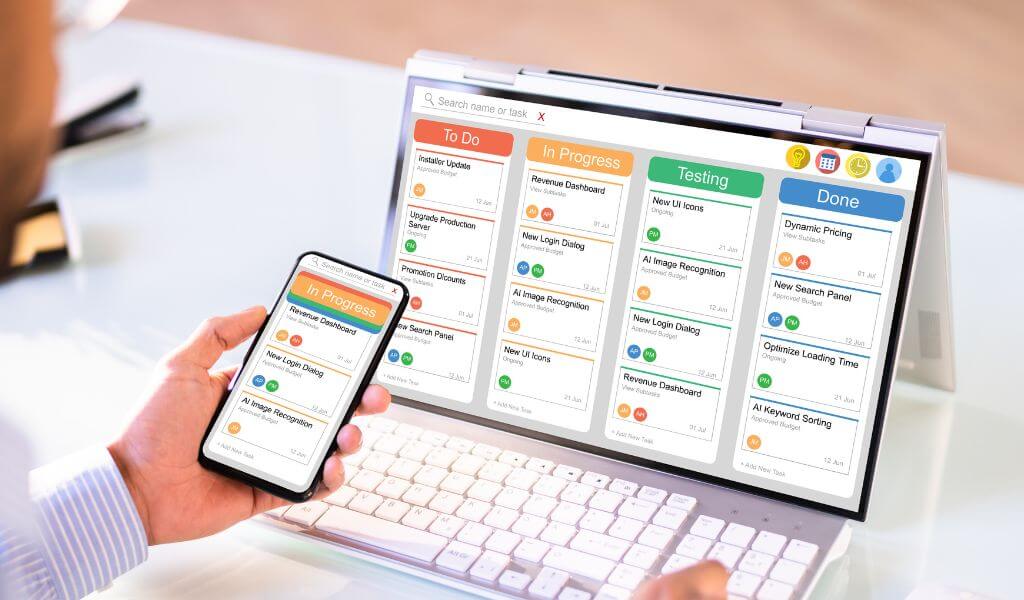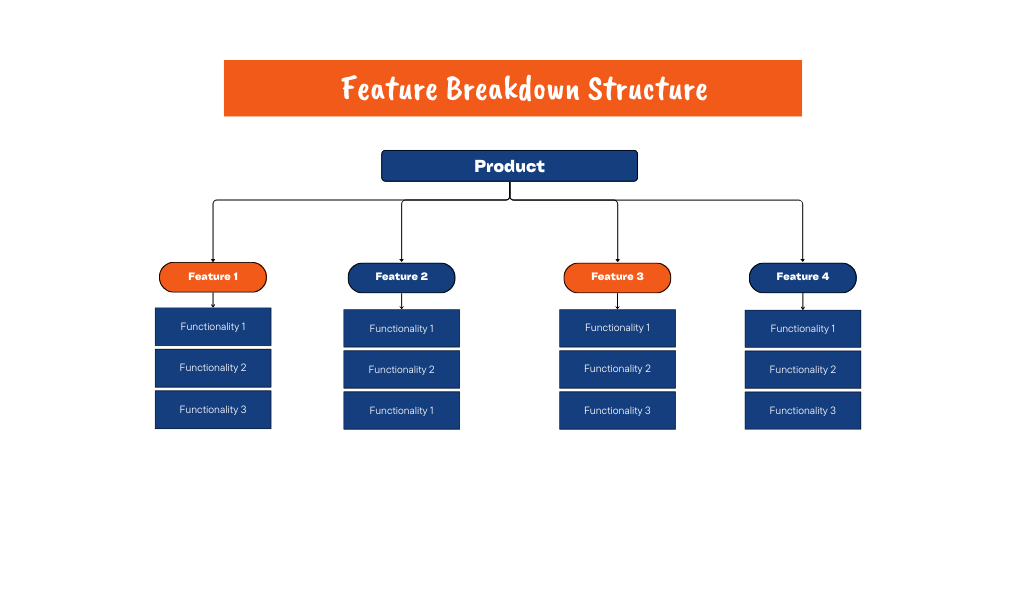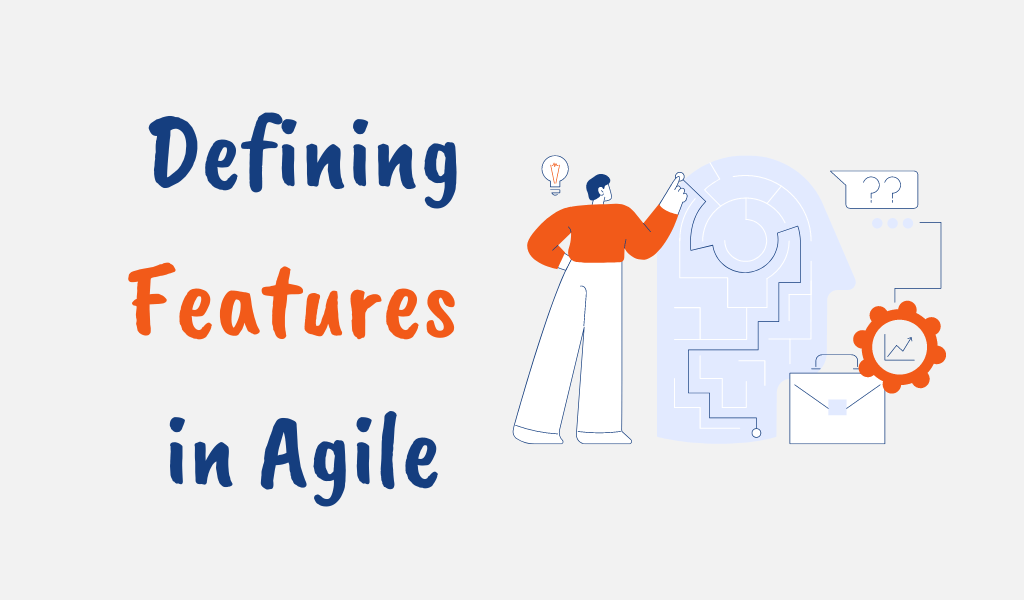Agile methods like Scrum emphasize the importance of delivering working software frequently through rapid, iterative delivery cycles called Sprints.
To make this possible, large projects must be broken down into smaller, manageable chunks of work called features.
Features represent units of functionality that deliver tangible business value for users bridging the gap between high-level epics and granular user stories. For Agile teams, properly defining features is crucial in delivering value and aligning with strategic objectives.
Features must strike the right balance between high-level vision and actionable specifics. When features are ambiguous or unclear, it leads to delays, scope creep, and friction between the product and development teams.
In this guide, we provide a comprehensive overview of features in Agile, including best practices for defining them, techniques for feature breakdown, as well as the differences between Agile epics, features, and user stories.
What is a Feature in Agile?
A feature in Agile software development refers to a piece of functionality that delivers tangible value to end users. Features represent functional requirements and capabilities that users care about.
A feature can be thought of as a service the system provides to fulfill one or more user needs.
For example, the ability to post statuses, upload photos, and view a newsfeed are all features that fulfill social needs on a platform like Facebook.

Agile Epics Vs Features Vs User Stories
Features are different from user stories in that they describe larger functionality at a higher level.
While stories represent small pieces of work that can be completed in a single sprint, features are made up of multiple stories and often take several Sprints to fully implement.
Epics encompass very high-level strategic initiatives and goals. An epic would be something like “Build a social networking app”. This epic can be broken down into many smaller features like profiles, newsfeeds, comments, et al.
In summary:
- Epics describe the biggest initiatives and goals
- Features describe medium-sized functionalities and services
- User stories describe small pieces of work for implementation
Characteristics of Effective Features in Agile
Not all features are created equal. Certain qualities and characteristics differentiate good features from mediocre ones.
For user stories, the INVEST criteria which stand for independent, negotiable, valuable, estimable, small, and testable are a useful litmus test for assessment.
In a similar vein, great features exhibit many of the following characteristics:
1. Provides Tangible Value
The ultimate purpose of any feature is to deliver value to users and the business. Good features directly address user needs and map to business objectives.
They provide measurable improvements that users care about. Before writing a feature, clearly define the value it will offer.
2. Independent
Ideally, features can be developed and tested independently of other features. There are no complex dependencies that block progress as independent features support rapid delivery with less risk.
3. Estimable
Teams should be able to reasonably estimate the level of effort required to implement a feature.
Estimation is difficult or impossible if the scope is too large or ambiguous, hence good features are scoped small enough to allow estimation, even if it is approximate.
4. Small Enough for Rapid Delivery
Agile emphasizes rapid delivery. Therefore, features should be small enough to fit within a single Sprint or at most a few Sprints.
Avoid large features that take months of work. Break these down into multiple smaller features that can be completed rapidly.
5. Testable
With a good feature, the team should be able to define test cases or acceptance criteria that verify the feature is working as expected.
Terms like “easier” or “faster” are vague and hard to test. Quantifiable acceptance criteria make features testable.
6. Aligns to Larger Vision
While small enough for rapid delivery, features should still align back to the larger vision and strategy set out in epics.
Maintaining traceability from features to epics helps ensure work remains strategic.
7. Avoids Gold Plating
An effective feature has its scope limited to the minimum needed to deliver the required value.
Extraneous functionality that goes beyond addressing core needs can bloat and complicate features so resist the temptation to gold plate by sticking to the agreed requirements.
Importance of Properly Defined Features in Agile
Here are some of the reasons why it is important to properly define Agile features:
- Provide business value to users
- Help the team break down large epics into actionable work
- Can be used to estimate the level of effort
- Enable the creation of roadmaps and release plans
- Prioritize the most impactful functionality
- Serve as the backbone of the Product Backlog

Best Practices for Defining Agile Features
Great Agile features don’t happen by accident and require intentional effort and the application of proven techniques.
Here are some of the best practices for defining effective Agile features:
1. Gather Requirements from Stakeholders
Features should be based on clear requirements from both internal and external stakeholders. This includes:
- User research to understand pain points and desires
- Discussions with customers to capture needs
- Analysis of user data and behavior
- Feedback from support/success teams
- Input from sales/marketing on market conditions
- Meetings with product manager and engineers
By gathering inputs from all sources, you can define features that deliver maximum value.
2. Write the Initial Feature List
Brainstorm and draft an initial list of all potential features based on the aggregated requirements.
The goal here is to be comprehensive without self-censoring or worrying about details as having a big list provides enough raw material to work from.
3. Apply Feature Breakdown
Break large features down into smaller features using a feature breakdown structure as this makes big initiatives more manageable.
Ask “What smaller features make up this larger feature?” Then decompose until the features reach the appropriate size.
4. Progressively Elaborate Details
Avoid Big Design Up Front anti-pattern as high-level features can be written to start and the details progressively elaborated via Agile modeling in later Sprints as needed. It’s important to resist over-engineering upfront.
5. Update the Feature List Iteratively
The feature list is not static and should be updated based on feedback, learning, and new inputs throughout the project lifecycle. Scrum emphasizes responding to change. Manage the feature list iteratively.
6. Collaborate Across Teams
Cross-functional collaboration ensures different perspectives are brought to bear. Features should be collectively defined by product, engineering, UX, and other roles as this increases buy-in.
7. Focus on Business Value
Features must tie directly to business objectives and goals to provide value and should reflect strategic priorities rather than just technical needs as validation against strategy prevents scope creep.
8. Define Acceptance Criteria
The acceptance criteria define what “done” means for a feature and are essential for testing. These criteria can be defined upfront at a high level and elaborated later on.
Agile Features Examples
Let’s look at some real-world examples of good Agile features for clarity:
- Shopping Cart: Allows customers to add, view, and modify products they want to purchase on an e-commerce site. Includes capabilities like changing quantities, applying discounts, estimating taxes, and shipping.
- User Registration: Enables new users to sign up for an account by entering details like name, email, and password. Includes email verification, password reset, etc.
- Social Feed: Displays a scrolling list of updates from friends and pages the user follows. Supports commenting, liking, and sharing updates.
- Profile Personalization: Allows logged-in users to customize their profile by uploading a photo, bio, links, location, etc. Provides user control.
- Notifications: Allows users to configure what events trigger notifications to be pushed to their devices. Supports email, SMS, and app notifications.
- Search: Provides the ability to search through content/products on the platform. Includes auto-complete suggestions, spell check, and filters.
- Payments: Handles credit cards and third-party payments like PayPal. Includes input validation, error handling, receipts, etc.
Each example represents a cohesive capability that likely spans multiple user stories and provides clear value to users in a domain they care about.

Turning Agile Features into User Stories
Once high-level features are defined, the next step is breaking them down into small, executable user stories. This is a key practice in marrying strategy with tactical implementation.
There are a few recommended patterns for splitting features into stories effectively:
1. User Roles
A feature can be split based on different user roles interacting with it. For example, an e-commerce feature like “shopping cart” could have administrator, customer, and guest stories.
2. Workflows
Another technique involves breaking a feature into stories along the different workflows involved in the feature. Using the shopping cart feature example, this could be add item, update quantities, apply promo, enter payment, etc.
3. Data Domains
User stories can cover different parts of the data domains. Cart stories could focus on cart metadata, cart items, item attributes, etc.
4. Operations
Common CRUD operations like create, retrieve, update, and delete often make good starting points for user stories.
5. Edge Cases
Splinter out stories to handle edge cases like errors and exceptions. Defensive code stories should complement happy path ones.
6. UI Elements
The various UI components can be broken into standalone stories for incremental completion.
Whichever way you choose to split stories, be sure to map them back to the parent feature so traceability is maintained using a story map to maintain a hierarchy of epics > features > stories.

Feature Breakdown Structure
A feature breakdown structure (FBS) is a hierarchical decomposition of large, complex features into smaller, more manageable components. Similar to a work breakdown structure in waterfall projects.
The FBS starts with the high-level feature as a single block. This feature is then broken down into a series of small, tightly scoped sub-features that each deliver part of the overall capability.
Each sub-feature can be further decomposed into even more granular sub-features. This recursive breakdown continues until sub-features reach an appropriate size for estimation and implementation as user stories.
A well-structured FBS maintains clear traceability from top-level features to atomic user stories. This mapping ensures that work remains aligned to strategic goals defined in epics and themes providing a framework to iteratively elaborate details of large initiatives.
Benefits of Decomposing Features into User Stories
There are several benefits to decomposing features into user stories:
1. Improves Estimation Accuracy
User stories allow the team to produce more precise estimates compared to larger features. Estimation is often fallacious at the feature level. By breaking into stories, the team understands all sub-components to better estimate.
2. Splits Work into Sprint-Sized Chunks
Agile teams deliver working software in short sprints, typically 2-4 weeks long. While most features are too large to complete in a single Sprint, user stories map to the right level of granularity for Sprint execution.
3. Allows Progress Tracking
Progress can only be tracked at the story level. Features are not started or completed, they are incrementally built via finished stories in each Sprint. Breaking into stories allows transparency.
4. Earlier Validation
Large features delay validation till late in development. Stories enable regular validation of small chunks to fail fast if needed and feedback is incorporated frequently.
5. Limits Risk
Unanticipated risks or invalid assumptions often doom big feature efforts. Smaller stories isolate risk and limit the blast radius of changes. Low complexity = lower risk.
6. Facilitates Planning
Only stories (not features) are added to Sprints during Sprint Planning events. The team forecasts what stories they can complete in a Sprint. Detailed Sprint Planning requires stories.
Conclusion
Features provide the all-important link between high-level epics and tactical user stories and when properly defined, they empower teams to deliver incremental value rapidly in short Sprints.
Taking the time to collaboratively define features following best practices pays huge dividends as the team is set up for success when they have clear, value-driven features to work from.
Remember to focus features on delivering tangible value, keep them small and testable, elaborate details iteratively, and break them down into stories for execution.
Applying the strategies outlined in this guide will level up your Agile team’s ability to build fantastic solutions users love.
Frequently Asked Questions
What is the Difference between a Feature and a User Story?
A feature delivers a large chunk of functionality that provides business value to users. A user story on the other hand represents a small piece of work that can be completed in one Sprint. Stories make up features.
Who Defines Features in Agile Methodology?
The Product Owner has the ultimate responsibility for defining and prioritizing features based on their knowledge of user needs and business objectives. But feature definition should be a highly collaborative process.
The development team, UX designers, QA, and other roles provide valuable input on shaping and elaborating features based on their expertise. Features defined unilaterally often run into problems so leveraging the wisdom of the team is key.
What Level of Detail is Appropriate for Defining Features Upfront?
Teams should avoid big design up-front and over-engineering features at the onset as high-level descriptions are sufficient to start. Details are progressively elaborated in later sprints via Agile modeling.
Focus on defining the value proposition, user needs addressed, and basic scope to establish a foundation. Resist the temptation to specify every aspect of the feature upfront. Allow details to emerge iteratively based on learning.
When are Features Broken Down into User Stories?
The decomposition of features into stories happens during Sprint Planning. The team selects stories they feel they can deliver in the upcoming Sprint. This ensures stories are fresh and sized appropriately when work begins.
Avoid fully decomposing all features upfront, as some stories become obsolete given Agile’s iterative approach. Let the feature breakdown happen “just in time” during planning based on near-term needs.
How Can You Split User Stories While Retaining the Big Picture?
Teams can use story mapping to break stories down while maintaining a hierarchical view from large features to small tasks. The map visually shows the relationship between elements.
A layered feature breakdown structure is another technique to progressively decompose features into stories while being able to roll work back up to features and epics. Maintaining traceability is key.
What Does a Feature Breakdown Structure Look Like?
A feature breakdown structure starts with the large feature as a single block at the top. This is recursively decomposed into multiple levels of smaller elements like stories.
Parent features maintain links to their “child” stories which allows rolling progress back up for reporting.
How Do You Prioritize Features in the Product Backlog?
There are different techniques for prioritizing features in Product Backlog using different criteria. MoSCoW prioritization is a technique for sequencing features based on must-have, should-have, could-have, and would-have-later status. Must-haves get addressed first. Other factors are business value and development cost.
Kano analysis looks at how features satisfy basic needs vs. delighting users. It balances simplicity and performance features. MVP techniques deliver core features early. Prioritization depends on multiple factors. Read more on Product Backlog prioritization techniques here.
How can you manage dependencies between features?
First, seek to minimize dependencies through loose coupling. Use techniques like dependency injection. When dependencies exist, model them on a dependency tree showing relationships and sequences.
Handle lower-level dependencies first. Call out dependencies when estimating features and stories, so if predecessor work shifts, dependents can adjust. Maintain open dialogue between teams if dependencies arise.





